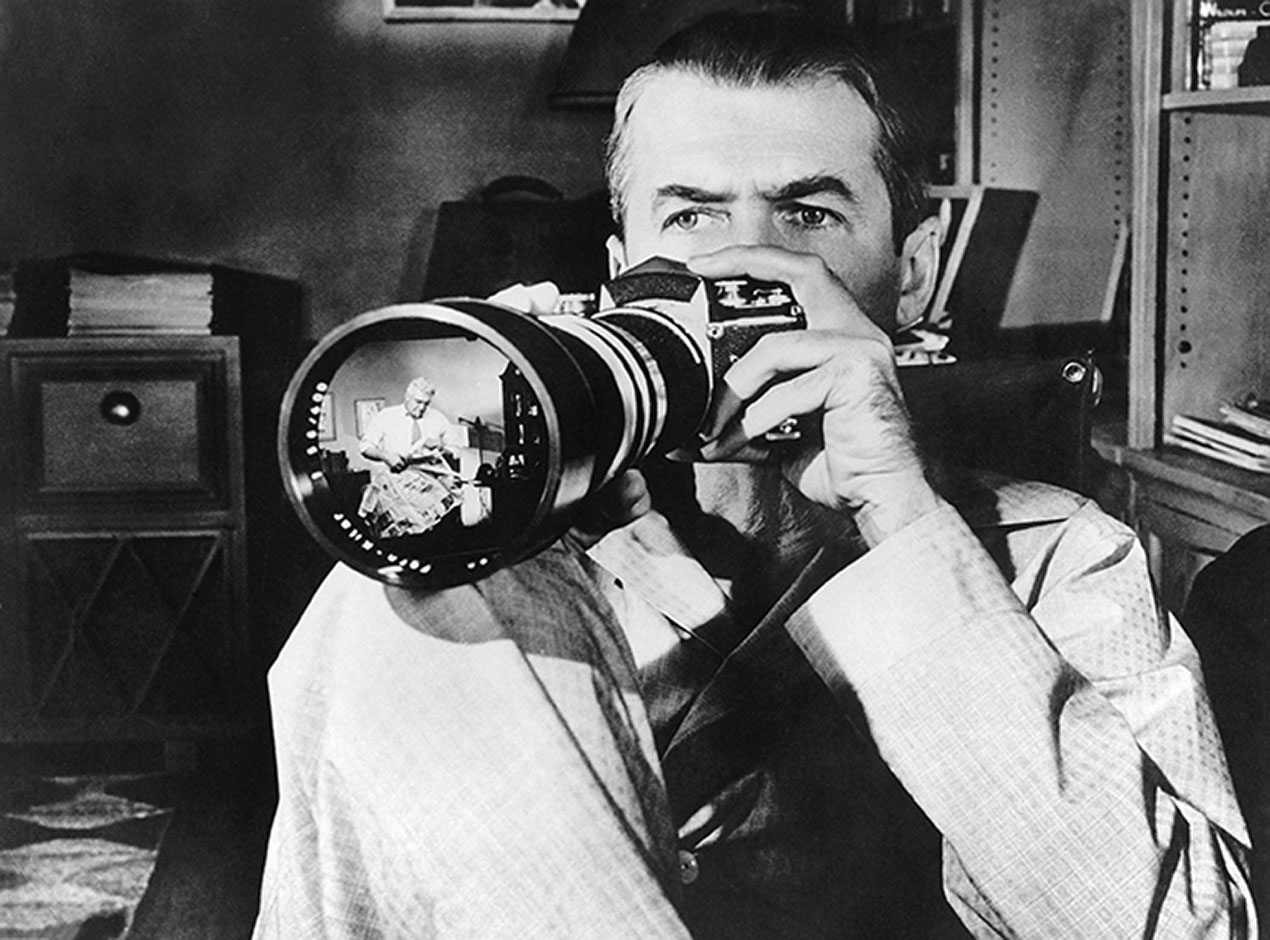Over recent months authors and commentators have turned to films and novels to try to make sense of these strange pandemic times. The choices have understandably tended to focus on dystopian futures, contagion narratives and plague yarns. As the so-called localised lockdowns continue, I’ve been wondering if there is another film that might capture the more mundane experiences of these times: Hitchock’s 1954 movie Rear Window.
Rear Window stars James Stewart as LB “Jeff” Jeffries, an injured photographer trapped in his apartment while convalescing from what appears to be a badly broken leg. The leg is set awkwardly in a long straight cast that almost completely restricts Jeff’s movement. He can’t go anywhere and so instead he looks out of his window onto the back of an adjacent apartment block. With nothing to do, he watches the little snippets of his neighbours’ lives as they move in and out of his eyeline. The glimpses start to become more intent and interested. His camera’s telescopic lens and some handy binoculars prostheticise his growing preoccupation with their lives. With nowhere to go and nothing to do, the casual glimpses escalate into a distraction and then to obsession.
Like Jeff, many find themselves trapped inside looking outwards, or are at least spending much more time than usual in the confines of their home. It’s clearly not the same for everyone and circumstances vary considerably, but perhaps Rear Window captures something of the immobility and constraints of our times. The restrictions mean that many are held in place, leaving them with only windows and restricted views. As with Jeff, imagination fills the gaps where social interaction used to be.
As the film unfolds, what appeared to be the fanciful suspicions of Jeff turn out to be true, yet really the murder story encased in Rear Window is just an incidental mechanism designed to give the film some plot direction and a dramatic crescendo. The film is really about the building frustration that results from isolation and confinement. It is also about the paranoia that can grow as narratives are created to connect the disparate, incomplete and highly limited bits of information that are available in such circumstances.
The narrowed view, contained by the window frame, which takes in only the back of a shared building, becomes the world and all that is known of it. That narrowed view increases the intensity and the pressure. Lacking interaction and activity, that narrowed view is agonised over for some form of social contact and for a sense of outside activity. As Georg Simmel once wrote of the overload of modernity, when faced with more information than an individual can handle there is a closing down that occurs. This protective limiting of horizons, Simmel argues, also leads to a more intense experience of those things that get through and that then are close to us. Rear Window envisions that process.
Rear Window is perhaps an inversion of the panoptic prison, with this particular prisoner constantly able to view the seemingly free. Of course, it is really a kind of prisoner seeing the liminal and circumscribed freedoms of his fellow prisoners. Where Jeff looked out onto that building and the lives of its few inhabitants, social media offers a slightly different type of window. Looking out upon such a limited view, framed by social media profiles, networks and groups, leaves plenty of scope for ideas to circulate and build, and for narratives to grow in the many gaps.
Jeff could easily have turned out to have been completely wrong in his assumptions. In fact, he should have been – it seems much more plausible throughout the film that his imagination is getting the better of him. It is the bizarre and improbable realisation that he is correct that is the basis of the drama. I wonder if the film might have been better if he were to have been misguided. The viewer is never quite sure, until late on, if Jeff is simply letting his obsession delude him. That is one reason why this is mostly a film about stifling confinement.
Thinking back to Rear Window, locked down under Tier 2 restrictions, it seems to capture the moment just as well as any science fiction might. It just captures something different and more tangible about the state of things: the utter frustration of restricted social life, especially when the only distraction is looking out of the window from within four walls. One key difference is that our rear windows come with notifications, news feeds and mentions.
David Beer is professor of sociology at the University of York and the author of The Quirks of Digital Culture.



Leave a reply
Your email address will not be published.